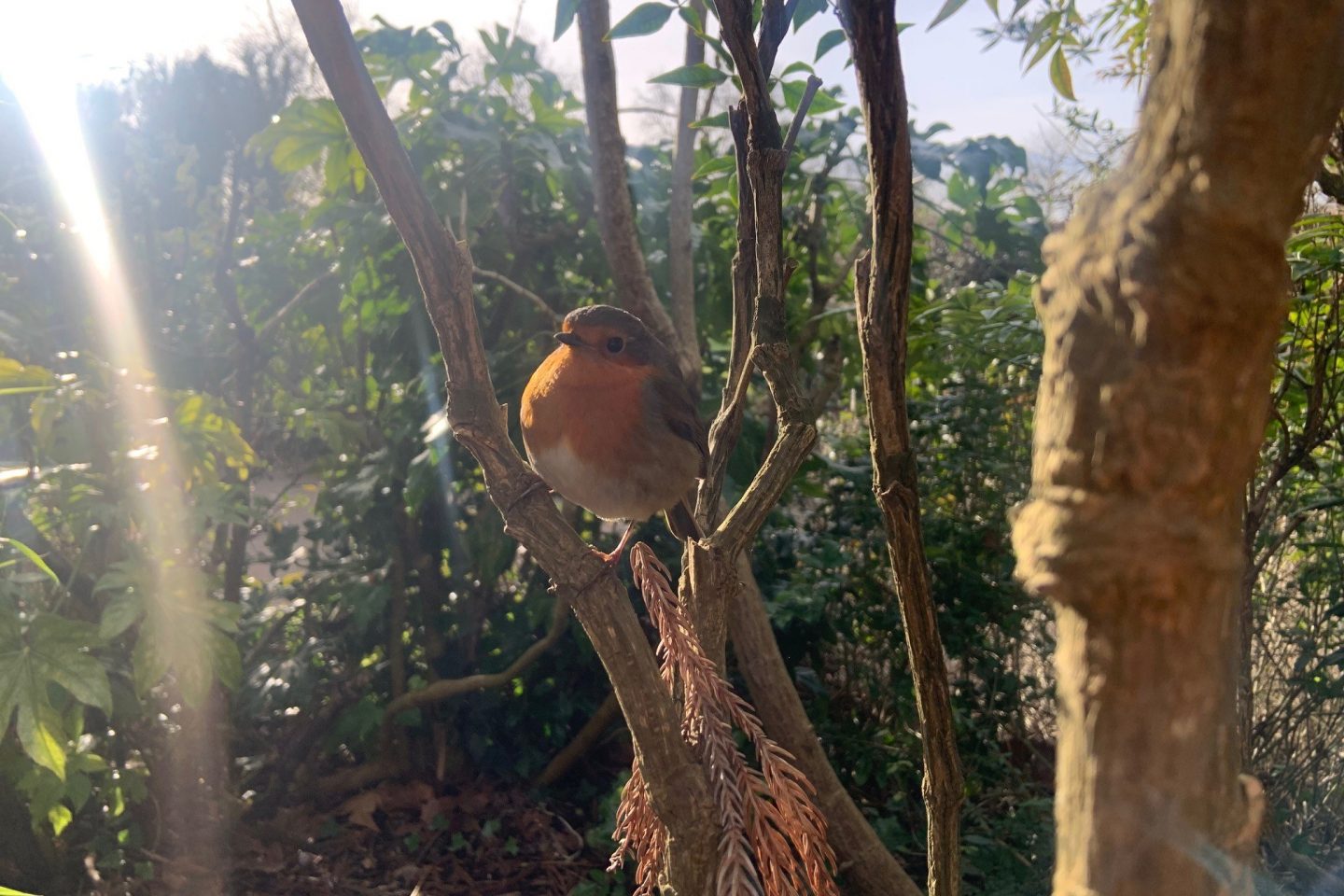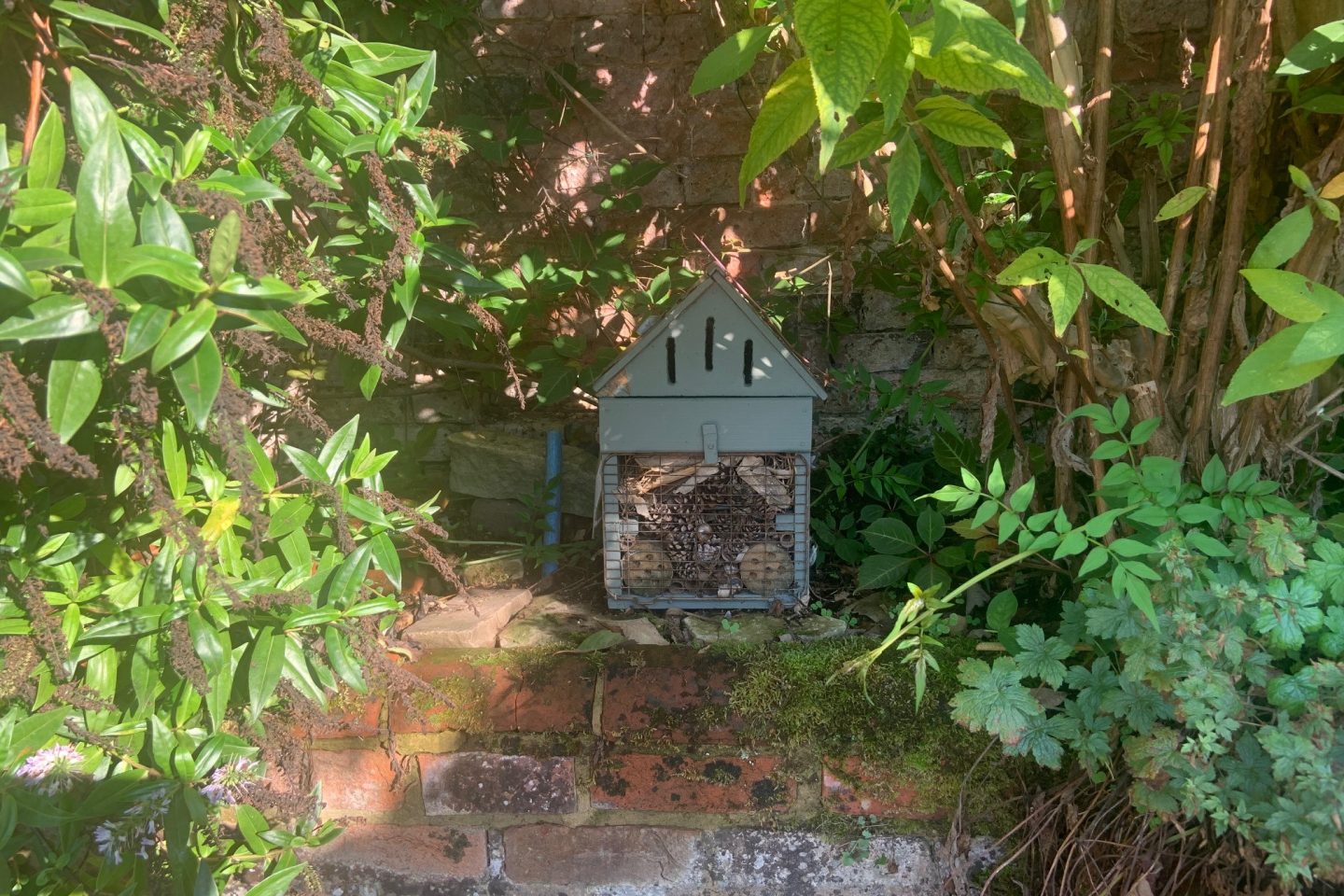

Our gardens are crucial for wildlife. Even in the smallest gardens, we can all do our part to create better habitats as well as encourage nature in our neighbourhoods.
As towns and cities grow and developments take over empty spaces that were home to nature, our gardens have become important for a wide range of species. If we take all our gardens together, they create some of the biggest wildlife habitats you will find. Our gardens combine to form a national network of nature reserves, playing a key role in supporting wildlife.
If we take all our gardens together, they create some of the biggest wildlife habitats you will find.
Andrew Fisher Tomlin
Planning garden elements and selecting plants can sometimes feel like it’s a complicated science. If you take it step by step, you can make the right choices.
Here are my 7 steps to a successful wildlife garden.

Knowing what you have in your garden before you start making changes is really important. Professionals might measure the dimensions of the garden they are working on, but they will also analyse what they have already - especially in terms of plant life.
With a wildlife garden, knowing your garden is even more important. Every small detail, whether it’s a damp shady space behind your compost bin, a pile of old paving or fallen branches, can be a useful refuge for wildlife.
Assess what resources you already have that are good for wildlife. At the same time, discover what wildlife is already in your garden. It might be very visible, such as birds, bees and butterflies. You probably also have insects nesting in the cracks of fences and under leaves, like beetles, worms and even newts or frogs.
Spend some time looking at what you have. Be very careful not to disturb wildlife too much while doing it - especially nesting or hibernating mammals.
Together, our gardens create a network of wildlife habitats. We should always look beyond our garden boundaries - especially for wildlife gardening.
My second step to success is to survey your neighbourhood. Find out what wildlife exists and you can help it thrive.
There are lots of resources available that could help, including local wildlife and garden groups. They may be be able to help you discover an even greater range of birds and insects in your locality than you might find in your garden alone.
When creating your wildlife garden, if you concentrate first on what is local to you, you can get the most immediate enjoyment. As you develop your garden, you can think about diversifying your efforts to encourage other species.

How much you want to share your garden with wildlife can, to some extent, be determined by you. The very essence of wildlife, however, is that it’s wild! Insects and animals will come in uninvited.
The key principles of gardening for wildlife are to provide:-
Knowing what wildlife needs is simple enough. There are so many ways that you can fulfil this and lots of resources out there to help you. These include buying bird boxes, making bug hotels, putting food out for birds and sowing seeds of pollinator-friendly flowers.
Providing places for wildlife to raise their young is sometimes forgotten about. Even if your garden is small and/or in a town or city, you can still help a huge range of wildlife species.
A successful wildlife garden needs to balance your needs with those of wildlife. It's a good idea to set some ground rules for your creative ideas to keep that balance in mind.
For example, you might want to keep your lawn, but make it more wildlife friendly by cutting it less and planting early spring bulbs for pollinators. Although a pond is a great resource for birds and insects, if you have young children you might want to stay safe and save building it for a later date.
Remember your garden is not the idealised garden in a magazine. You are in control of your own garden’s destiny and will be able to balance wildlife with your needs.

There’s treasure to be found every day in a garden. That could be noticing the first apple blossom of the year, discovering a bird has made a nest or finding some self-seeded trees.
Planning new wildlife ideas every year is good fun, whether it’s a new pollinator-friendly plant or installing some bird boxes. I’m a big fan of slow gardening, taking one step at a time with an underlying idea of what the big picture is.

Having created many new gardens over the years, I know that designing a garden is not about filling space. It’s actually about looking at your garden in 3D, so you can layer the design of elements and planting to work with your own needs and with the needs of wildlife
You can create exclusively wildlife areas, even if it’s the back of a shed. But you can also create space for both you and wildlife. As mentioned above, your lawn is a good example of this. If you plant bee and butterfly friendly bulbs into your lawn, you can leave the grass longer before cutting it back for summer play. This is a great maintenance saving tip too!
I would also encourage you to think about layering plants through the seasons. For bees and butterflies, spring bulbs can provide early sources of food. Leaving plants to die back naturally and not being too tidy can give shelter for solitary bees and food for birds.
My final step is about planting the right plants for wildlife, nature and you. Plants can be the hardest part of our garden to source when gardening for wildlife but in my opinion as a horticulturist they are also the most important.
We have to ask ourselves if we should start by choosing native plants. The challenge here is that the range of native plants available that are good for wildlife can differ greatly from region to region. In Australia, for example, you have a rich range of valuable native plants to choose. If you garden in Northern Europe, though, you will have considerably less native plants. You will have access to many non-native species that will still be great for wildlife.
I hope that these seven steps have given you a lot to think about. Take small steps and you will be surprised how much more wildlife you can welcome into your garden and live happily alongside.